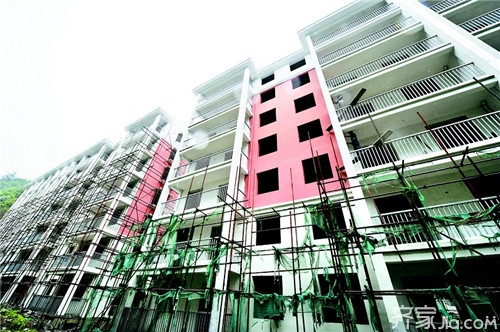
I. Preliminary preparations (1) Location of the project: Site selection, red line design, design conditions, planning and design, construction plan (concentrating new construction as preliminary design, construction as implementation plan) and approval. Including handling (planning department issued a site selection statement, land use planning permit, planning land demolition red line map, the land sector issued a land use opinion);
(II) Project establishment (for handling by the Municipal Development and Reform Commission);
Second, house demolition

(1) The demolished person provides property right basis and valid ID card;
(2) The demolition staff will review and confirm, conduct surveying and mapping, and appraisal, and report on the assessment of the three work sunrises and publicize it for 7 days;
(3) If there is no objection to the results of the evaluation public announcement, the demolisher and the person to be demolished shall sign a demolition compensation and resettlement agreement;
(4) If the exchange of property rights is chosen, the houses shall be selected in the order in which the agreements are signed; if monetary compensation is selected, the compensation shall be paid to the bank according to the amount of the signed agreement, and if the relocation is completed within the prescribed time limit, the award will be based on the evaluation price of the housing demolition market. (f) Completed the relocation and handed in the house, and signed and accepted by the demolition staff;
(6) Dismantling of the organization.
Third, the government provides land (administrative allocation or listing transfer);
IV. The construction phase includes reviewing and filing of engineering construction drawing design, releasing lines and inspection lines, and planning permission, bidding and tendering, safety and quality supervision (including entrusted supervision), handling “construction project construction permit†and signing construction contract, construction and management And other links.
V. The acceptance stage includes the acceptance of buildings and construction projects concerning planning, fire control, environmental protection, municipal gardens, lightning protection, and water supply and drainage, as well as acceptance of construction projects. VI. Distribution and Management Procedures (1) The private houses will be distributed to the relocated households according to the sequence of the agreements when the relocated households sign the agreement. The management of the community after check-in is the responsibility of the property company.
(2) Tenants who directly manage public houses and units whose houses are self-managed (1) Apply to the residents' neighborhood committees of the place of residence. After acceptance by the residents' committees, they will conduct household surveys, organize residents' group appraisals, and publicize the qualified district government;
(2) The district government commissioned the sub-district office to review the applicant's situation and publicize it. The eligible district-level housing security agencies shall report to the municipal government.
(3) The municipal government entrusts the Municipal Real Estate Management Bureau to organize the examination and public announcement. If it is qualified, it shall be submitted to the municipal government for approval and a shake number shall be adopted to determine the serial number of the selected house.
(4) The signing household selects the house.

(5) The middle-income households go to the city real estate management office to apply for the lease.
(6) The municipal real estate management office is responsible for the management of low-rent housing, including the collection of rents and the management and maintenance of low-rent housing.
Xiao Bian concludes: As shanty towns are a problem left over by history, it has a long history and a profound impact, so the transformation of shanty towns is absolutely not anxious for success. We must recognize that the transformation of shantytowns is still a long and arduous task. Although it is difficult to reform the shantytowns , every process is indispensable and must be treated with care.
Own House Renovation Process Renovation Renovation Process Renovation Process Renovation of Old Buildings
Low carbon USS flat washers, typically used with Grade 8 or hardened steel bolting, are used under bolt heads or nuts to increase the bearing surface area, or to offer protection so that the nut or bolt can be rotated without distortion of the bearing surface. Flat washers are also used to give tightness to a joint, to prevent leakage, and especially to distribute pressure under the head of a bolt or nut. Dimensional specifications are governed by ASME B18.21.1. USS (United States Standard) flat washers have a larger outer diameter than SAE (Society of Automotive Engineers) flat washers, and can be utilized in nearly any application. ASTM F844 covers the standard specifications for unhardened steel flat washers for general use. Available in zinc plated finish. Zinc plating sacrifices itself, corroding before the base material, offering added corrosion resistance.
If you need more information or want to order washers, please contact us.
Carbon Steel Gasket,Zinc Coated Washers,Galvanized Steel Washers,Galvanized Plate Washers
Taizhou Hongchuang Hardware Co., Ltd. , https://www.jstaizhouhongchuang.com
